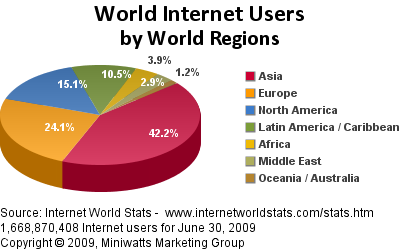Here are my thoughts on each of the chapters we had to read this week in The Art of Possibility:
Chapter 1: It's All Invented
I think that this chapter boils down to how one reacts to a situation. I like reading self help books from time to time, gleaning bits of advice from here and there. I really liked the example of the two shoe salesmen in Africa. I feel that almost any situation can come out as a positive one. It just depends on how you look at it. You make your own destiny.
"What might I now invent, that I haven't yet invented, that would give me other choices" (Zander, 2000).
Chapter 2: Stepping Into A Universe of Possibility
You have to kind of reinvent the way you handle things if you want to be more successful in your endeavors. Our reality is a direct reflection of how we perceive and react to everything (how's that for new-agey double speak). You have to move in an "ebb and flow" to everything. Your attitude and actions aren't going to give you overnight results, but they will put you on the right road to where you want to be.
"The universe of possibilities is the place you seek after you have discovered that it's all invented" (Zander, 2000).
Chapter 3: Giving An A
I don't know if I necessarily agree with this chapter, but I understand the rationale behind it. The central theme of this chapter is seeing the good in everyone. Encouragement is the key to developing good relationships with peers and family. You can't do it in a condescending fashion, but go at it with sincerity and passion. If you help one another in achieving their goals, they will in turn, help you achieve yours.
"The A is not an expectation to live up to, but a possibility to live into" (Zander, 2000).
Chapter 4: Being A Contribution
I really liked this chapter, as I believe in helping others and trying to make a difference in at least one person's life. The example of the lady throwing the starfish back in is a beautiful one. You're never going to affect everyone you come in contact with. That is just a fact of life. You can't let this discourage you though. You can't look at your efforts on a scale of accomplishment, comparing yourself to others. You need to look at the bigger picture to see how wonderful and intricate the Universe is as a whole. Contributing yourself into others' lives instead of measuring the accomplishments of your own will give you a richer life.
"It makes a difference to that one" (Zander, 2000).
Chapter 5: Leading From Any Chair
The most successful leaders in any industry surrounds themselves with the best and brightest. You have to be willing to make it a group effort in order to get the best out of anything, whether it's your work or personal life. The worst leaders are those that think that they are the only ones that have good ideas and never take input from their "underlings". If you are willing not to receive the glory all of the time, you will find you will get farther in life.
"A conductor can be easily seduced by the public's extraordinary attention to his unique offering and come to believe that he is personally superior" (Zander, 2000).
Chapter 6: How Serious Do You Make Things Out To Be?
Another one of my favorite chapters. Your life is going to suck sometimes. There's no way getting around that. You're not always going to ride off into the sunset. Your heart is going to get broken. You will sometimes fail at what you attempt. This chapter relies on the principles of Chapter 1 as well. Your reaction determines your outcome to adversity. Understanding to let go has been a big lesson to learn in my life. I'm still working on it, but the better I can make my life. Sometimes you have to understand that you don't have control over everything, so just let go and know that everything will work out in the end.
"We need to remove the part of ourselves that developed in the competitive environment of the measurement world" (Zander, 2000).
Zander, R.S. (2000). The art of possibility: transofrming professional and personal life. New York, NY: Penguin Books.
